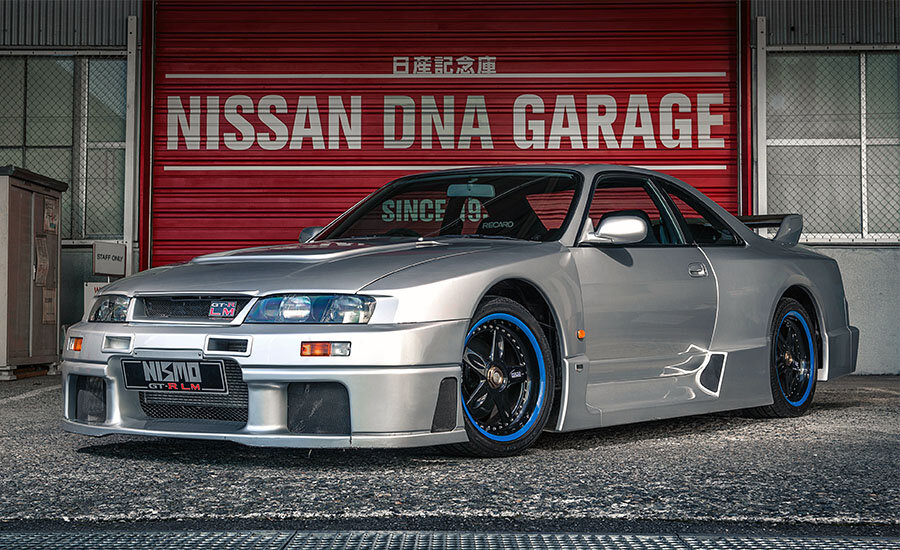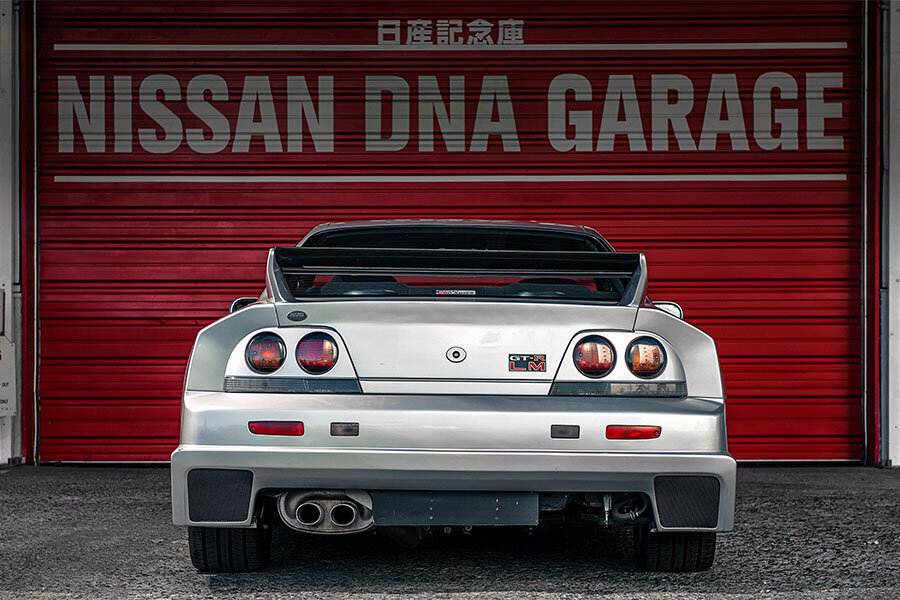Guide: Nissan R33 Skyline GT-R LM Nismo - a Historical & Technical Appraisal
/BACKGROUND
Two key factors led to the transformation of sports car racing in the early 1990s.
As the 1980s drew to a close, the cost to compete in the World Sportscar Championship began to rise inexorably. New regulations needed expensive new cars and, one by one, privateer teams were forced out.
Not unexpectedly, the 1993 World Sportscar Championship was abandoned before it started owing to insufficient manufacturer interest.
Meanwhile, a year or so earlier, the less costly discipline of GT racing had begun a tentative revival.
Up until the early 1990s, the prevalence of comparatively inexpensive Group C customer Prototypes meant much slower GT-based series had all but died out. The failure of Group B circuit racing meant that, between 1986 and 1991, the international GT scene was practically non-existent.
Throughout this period, Nissan campaigned top flight Prototypes.
Their Group C programme began in 1985; it produced a series of spectacular vehicles and culminated in Nissan winning the 1990, 1991 and 1992 All Japan Sports Prototype Championships.
In conjunction with their official North American motorsport partner, Electramotive Engineering, Nissan also won the IMSA GTP championship for three consecutive seasons in 1989, 1990 and 1991.
The successful reboot of the Grand Touting class was the direct result of an imploding Prototype racing scene. GT racing’s low participation costs at a time when money was tight proved highly attractive. Easy-to-meet homologation requirements quickly led to a range of well priced cars being offered.
Burgeoning national GT series in Britain, Italy and Germany were joined by the international BPR series from 1994. Like the BPR organisers, the governing body that oversaw the annual Le Mans 24 Hours (the Automobile Club de l’Ouest), cut GT class homologation requirements to just a single road-going iteration of the proposed racing variant.
Over the next few years, myriad GT specials were produced by manufacturers wanting to participate.
One of those was Nissan who, for 1995, decided to race a specially tuned R33 GT-R in the GT1 class at la Sarthe.
Nissan had already created a version of the new-for-1995 R33 GT-R to contest that year’s Japanese GT Championship so a spin off model for Le Mans would be a comparatively straightforward undertaking. A single road-going street version would be built in order to qualify for the GT1 class.
The R33 GT-R LM emerged from NISMO (NISsan MOtorsports) in the spring of 1995. It was then flown out to England to gain European type approval. This proved straightforward and the one-off silver car was UK registered M828 VWL on March 21st.
BODYWORK
Nismo created the GT-R LM primarily to homologate a wide-bodied racing variant for the GT1 class.
Aside from the roof, doors, glass and rear light assemblies, everything was new; what emerged looked like a modern interpretation of a Group 5 car from the late seventies Silhouette era.
The simplified front bumper retained the GT-R’s trademark rectangular ducts. Underneath was a new apron with three further massive intakes. As the new front fenders were re-profiled at their leading edge, the indicators had to be moved down to the bumper.
A new front hood featured a large but shallow power bulge.
The front and rear fenders were dramatically widened in order to accommodate the biggest possible wheels and tyres for racing.
Deep side skirts were vented and ducted.
A fairly standard looking rear spoiler was mounted on a trunk lid that had been reconfigured to integrate with the heavily flared rear fenders.
The rear bumper assembly was completely new. Shrouding the lower apron was a massive extension that would enable the racing variants to accommodate more effective underbody venturis.
At 1888mm, the GTR-LM was 108mm wider than a standard GT-R. It also stood 60mm lower.
CHASSIS
Although the base model GT-R’s advanced underpinnings represented a very good platform for GT racing, Nismo made two key changes.
Firstly, the suspension was switched from a multi-link layout to double wishbones all round. The suspension was fully adjustable with new springs and dampers and beefier strut braces. The unitary steel chassis was modified to suit.
Secondly, the four-wheel drive / four-wheel steer system was ditched in favour of a light weight rear drive / front steer set up.
The LM also came with handsome new split-rim wheels which, at an 18-inch diameter, were an inch taller than the standard GT-R.
Everything else was pure GT-R.
Brakes were supplied by Brembo in Italy. The ventilated discs had 324mm diameter at the front and 300mm diameter at the rear. Front calipers were the four-piston type while two-piston calipers were used at the rear.
A 65-litre fuel tank was mounted in the boot floor.
ENGINE / TRANSMISSION
The GT-R LM road car engine was rated as 300bhp at 6500rpm and 275lb-ft at 4500rpm.
By comparison, the standard R32 GT-R officially produced 276bhp at 6800rpm and 271lb-ft at 4400rpm. However, the gentleman’s agreement among Japanese manufacturers to limit output to 276bhp was being quietly flouted by a number of domestic car builders at the time. This included Nissan and most R33 GT-Rs left the factory producing closer to 300bhp than 276bhp.
It seems likely the GTR-LM would have been fitted with one of Nissan’s special N1 engines. These were designed for racing and tuning use; upgrades included metal instead of ceramic turbocharger turbines and various strengthening / cooling enhancements.
The N1 engine was in turn based on the standard water-cooled RB26DETT found in practically every GT-R of the era.
It was a dual overhead camshaft straight six with twin turbos and a light alloy four valve head. Displacement was 2568cc thanks to a bore and stroke of 86mm and 73.3mm respectively.
Compression was the same as before (8.5:1).
The standard boost setting was 0.85 bar.
Transmission was to the rear axle only through a five-speed gearbox and limited-slip differential.
For Le Mans, the works GT1 race cars were fitted with air-restricted 400bhp engines and six-speed gearboxes (one manual and one sequential).
INTERIOR
The LM interior was lifted from the standard base model GT-R.
The only special additions were single-piece front bucket seats and a Nismo alcantara-rimmed three-spoke non-airbag steering wheel.
The front and rear seats were upholstered in black fabric with patterned grey and white centres.
Most of the upper cabin surfaces were formed from hard-wearing black plastic
As normal, the main instrument binnacle housed large read outs for road and engine speed plus smaller gauges for oil pressure, water temperature and fuel.
Three additional read outs for torque split, oil temperature and turbo boost were located on the centre console.
Air-conditioning, power-assisted steering, electric windows, electric mirrors and a stereo were all supplied.
WEIGHT / PERFORMANCE
Despite the lack of a four-wheel drive system, at 1560kg, the GTR-LM was 20kg heavier than a V-spec R33 and 30kg heavier than the base model.
As normal, top speed was limited to 155mph and 0-62mph took 5.6 seconds.
SUBSEQUENT HISTORY
The GTR-LM was never marketed for sale and only one (silver) example was ever produced.
At the 1995 Le Mans 24 Hours, one of the cars in attendance finished tenth overall and fifth in the GT1 class. McLaren famously won the event with their own GT1 class F1 GTR.
The GT1 Skylines returned for 1996, after which Nissan decided to apoint TWR to create and run a scratch-built GT1 contender for 1997 (the R390).
Nissan have retained all their GT1-based R33 Skylines including the one-off GT-R LM road car.
Text copyright: Supercar Nostalgia
Photo copyright: Nissan - https://www.nissan-global.com



































